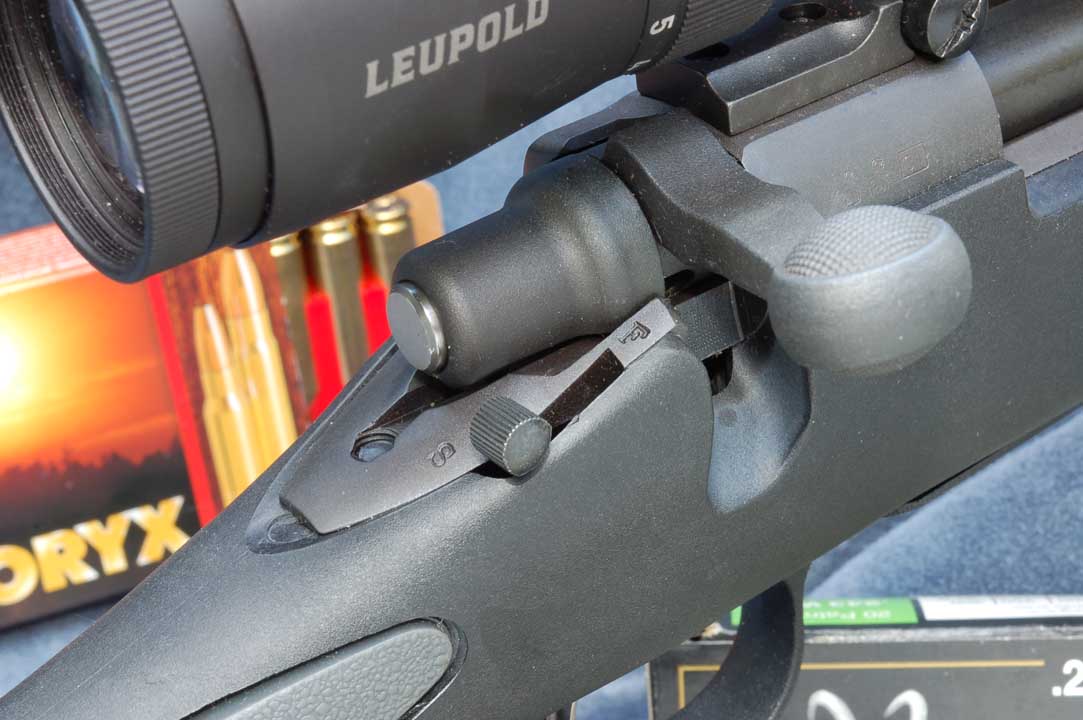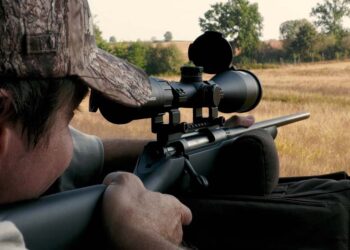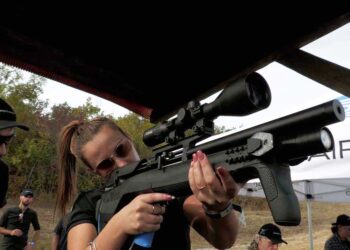
At the moment we have limited ourselves to the calibration on our eye and on the chosen ammunition for a hunting action, therefore everything within 100 meters of the line available at the Bonicelli estate in Ceresole d'Alba (CN): the two double shots (the Maestro Carlo always imposes verification after a first shot) and the immediate achievement of centering with shots given in both directions, has certified the possibilities and the service that Simmons was ready to provide us. The shooting sessions in the range are still missing where we will verify the correspondence of the weapon and optics combination over greater distances and we will further check the functionality of the turrets with the square test.
The 8 Point 6-18×50 Model

In Europe and particularly in Italy there has been a run-up to magnifications which has no counterpart, except in special cases, in other areas: undoubtedly in the USA and Canada optics are used with 12x reaching even 24x, scratching with curiosity and interest in all intermediate values. The evolution has been continuous and, in recent years, with increasingly accelerated motion. From the first 4×32s a notable leap had been made with the 6×42s which were promptly joined by the 8×56s, specialized for shooting in extremely low light conditions, and then the leap with the variable ones up to 12x was a nothing.


We seemed to settle on this value, which for us is already significant after 35 years in the mountains with a Nickel 6×42, while the 14 and then the 16, the 20x and so on and counting presented themselves with enthusiastic favors of the public. This is not the place to analyze the validity of these choices and the accompanying contraindications, medals always have two faces, but we can certainly say that a variable 6-18×50 covers a very wide range of needs, today underlying hunting in support on stationary wild game or outreach on moving ones, such as from the one in the shooting range which many implement as an interesting entertainment. So let's take a first look at the Simmons appreciating the workmanship adapted to the needs and expectations of a clientele that puts the technique on the plate never separated from the quotation.
The quality characteristics

Today various prerogatives have become common, they certainly weren't once: thus we observe the one-piece tube made from impact and water resistant aeronautical aluminum, therefore the telescope is waterproofed thanks also to the filling with nitrogen gas which acts as an anti-fog. The multi-coated and anti-reflective lenses ensure a smooth passage of light and a clear and high sharpness view of the target. The rubberized eyepiece protects the eyebrow from shocks in the event of exuberant calibers and a forced shooting posture so as not to let a valuable game escape: with its rotation you adjust the diopters appropriate to your vision. Furthermore, the interpupillary distance, that between the eye and the lens, is equal to 84 mm with a favorable adjustment range at the moment of the tappet.


In front a knurled wheel ensures the setting of the magnifications: it is nice to note how, in accordance with traditional USA values, the 9x is shown in red, facilitating in any case the finding of the intermediate magnification for a closer shot and perhaps with rapid intervention. The reticle is placed on the second focal plane, therefore the apparent size of the cross always remains thin despite varying the magnifications and therefore covers the target with minimal entity: a trained eye knows how to make good use of this prerogative.
The adjustments
The turrets with shots close enough, but always clearly perceptible, subtracting 30 MOA in both directions and each single shot is worth ¼ of a MOA (7,27 mm at 100 meters). The parallax corrector is placed on the bell: not exactly very comfortable if you are already aiming and every movement is annoying, but so graceful that there is this device that you cannot do without when you pass the 12x.

Finally we give the values of weight equal to 467 g, decidedly favorable, and of length with 337 mm, here too compactness is a nice prerogative to which is added the supply of rings together with the instrument: valid and substantial with four screws for each for a correct draw.














































